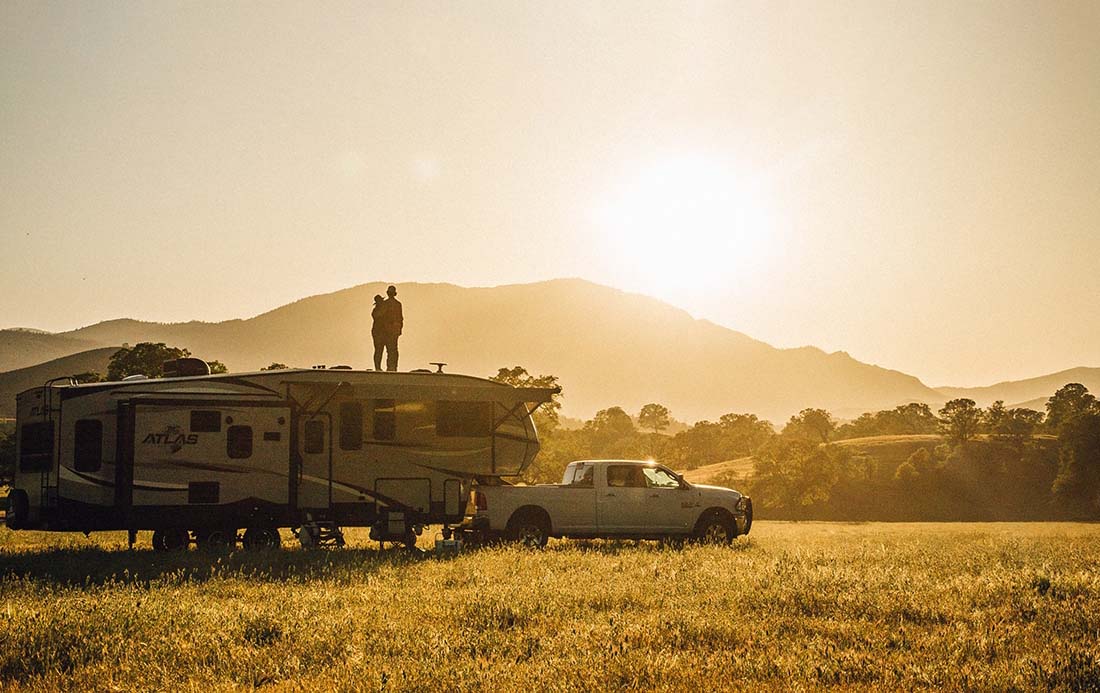Hi Mark My Words Readers! This month we’ve got questions on axle flips, generators, toilets and propane. Remember to send your RVing questions to [email protected].
Mark,
Could you discuss the pros and cons of doing an axle flip on a fifth-wheel that results in gaining three to four inches clearance from your truck bed? Also, a friend gave me one of those brass fittings that allow you to fill a 16-ounce propane bottle from a larger bottle. However, no instructions were included, and I can’t make it work. Can you explain the process?
Ron
Hi Ron,
Flipping the axles is a common way to raise the fiver to accommodate a taller tow vehicle. It will gain you around three to five inches of increased hitch height. The job should only be done by a competent shop, as new spring perches must be welded onto the axle. You can’t simply flip them over, as the axles are designed with a built-in bow to provide for proper toe-in and camber. Most trailer service places can do the job. The only disadvantages will be the need for an additional step at the entry door and a slightly raised center of gravity on the rig. These modifications don’t usually adversely affect either tire wear or handling.
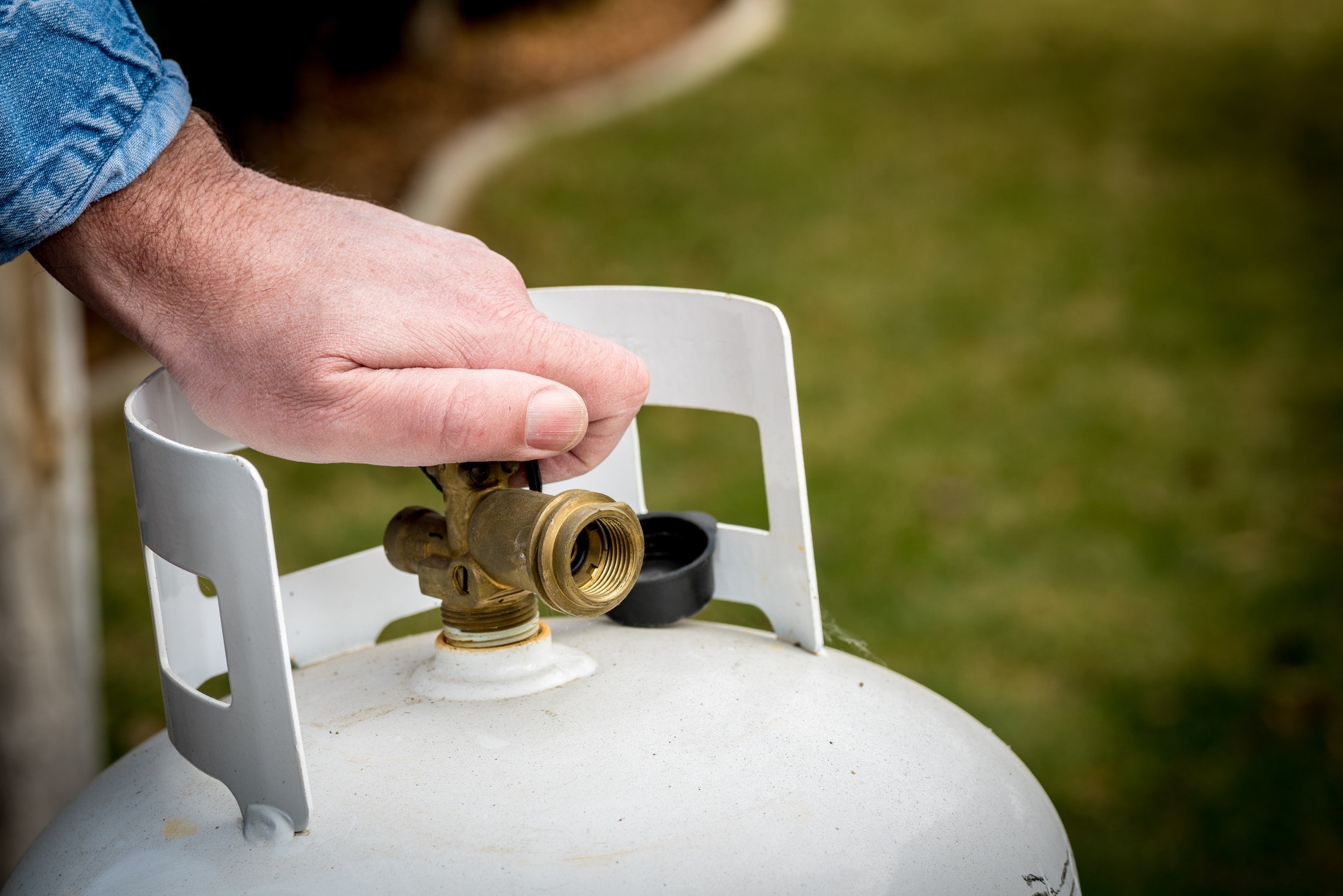
Getty Images
The bottle filler is a mixed blessing, in my opinion. To use it, you attach it to your large tank and then screw the small disposable cylinder onto it. Then you must invert the large tank so as to feed only liquid propane to the small cylinder. Open the valve and some gas will be transferred to the smaller tank. I have played with one of these refilling fittings and attempted to refill a number of cylinders. I have found that you typically don’t get a complete gas charge into the little tank.
About half-full seems to be the average, and, what’s worse, many of the little disposable tanks will fail to seal properly after refilling and can leak gas. For that reason, you should never store refilled disposable cylinders in any compartment or enclosed area. Plainly labeled on all disposable cylinders is a warning that they cannot be transported or shipped if refilled. That’s because the dispensing valves weren’t designed for repeated use, and most will leak after several refilling cycles. Due to the problems I experienced, I now just buy the disposable tanks from the store and don’t try to refill them.
Hey Mark,
We are about to purchase a fifth-wheel and begin full-time RVing. Our plan is to spend two to three months at a park and do some sightseeing as we travel around the country. Should we invest in an onboard generator when we make this purchase? This would add $5,000 to the price. Could we get by with a less expensive portable generator or should we make the original investment upfront?
Thanks,
Ray
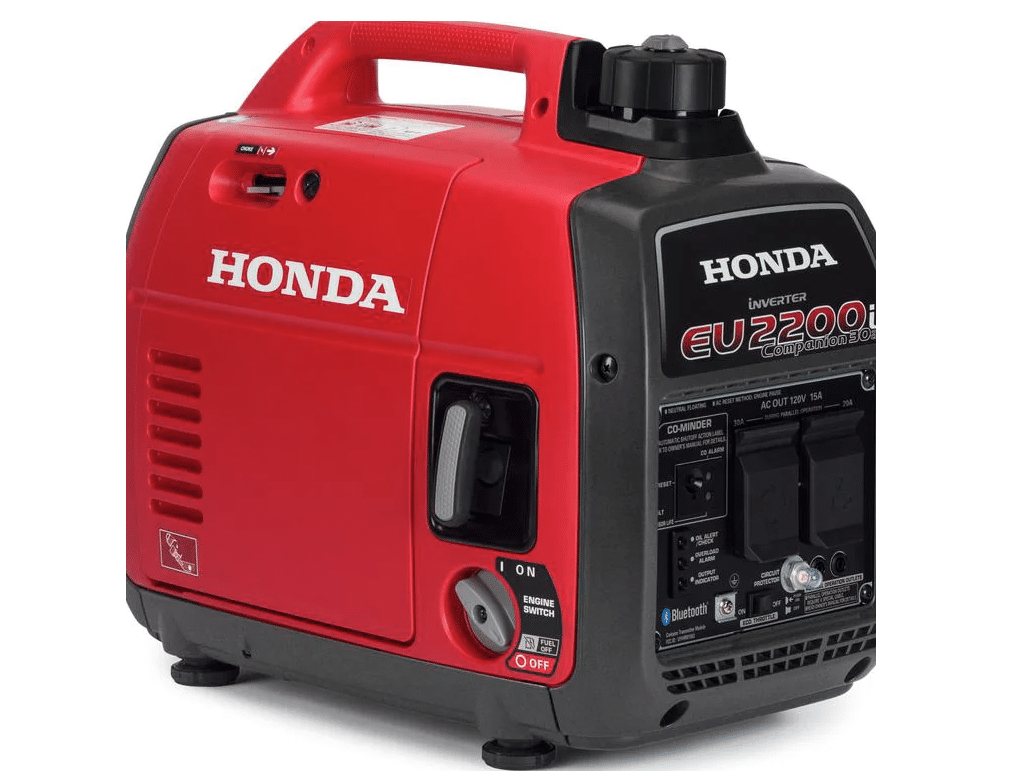
Honda CU2200. Photo: Camping World
Hi Ray,
You might want to just get the fifth-wheel without the generator. It is always possible to add one later after you have had a chance to see if you really need one. After you spend a few months settling into your new lifestyle, you’ll know whether or not you need a generator. Many RVers have onboard generators they hardly ever use. Unless you will be spending a lot of time away from electric hookups, a generator is just extra weight and expense. Plus, you have to exercise them every few weeks to keep them healthy.
If possible, have the RV made “generator ready” by the manufacturer or dealer. They will prep a compartment for accepting a generator and typically will install a transfer switch and all necessary wiring. (Some units come from the factory with generator prep as standard equipment.) Then, if you decide you need a generator, adding one is painless. Portable generators are another option, but don’t be tempted by that $400 open-frame contractor’s generator. Those units are ill-suited to RV use as they tend to be noisy and do not last as long as a quality inverter generator. The only portable generators that are suited to RV use are smaller portable inverter units like the Honda EU series. These units are quiet and efficient, but their capacity is limited. For more information on portable inverter generators, check out these links for Yamaha and Honda.
Mark,
It is time for me to replace my RV toilet. Has anyone done any research as to the best on the market? Any input would be appreciated.
Tom
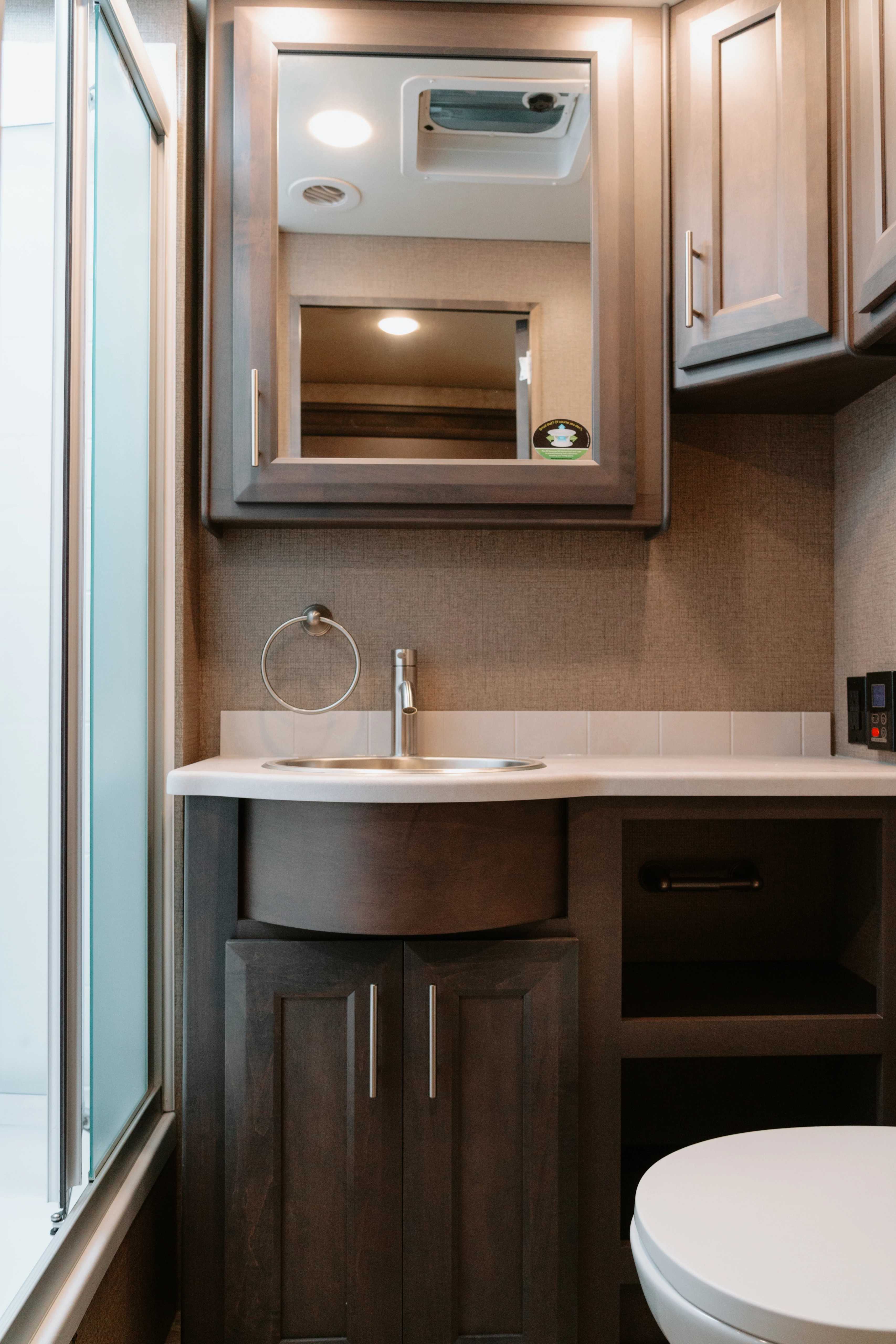
Photo: Camping World
Hi Tom,
The current RV toilet manufacturers are Dometic and Thetford. Sealand is now owned by Dometic. There are a wide range of prices and options. The Thetford Aqua-Magic line seems to be the most inexpensive choice, and the Sealand toilets are at the high end of the price range. Most of these units are similar in the way they perform their function (how much innovation is really possible in an RV toilet?) and are generally interchangeable. You’ll need to determine if your existing toilet is a high-rise or low-rise model and replace it with one of the same height.
If you go with a different brand or model, you may need to modify the freshwater connection, as different models tend to have slightly different water connections. Prices vary from around $120 for the Aqua Magic up to around $350 for top-of-the-line models from Sealand. Shop around to find the best prices. Special features, such as china bowls and more house-like appearance and operation, are available on the more expensive models. I guess it all depends on what you feel is the best match to your wallet and your personal preferences.
Dear Mark,
We’re in the process of shopping for a new RV, and we’ve found several models that utilize a single huge holding tank instead of separate black- and grey-water tanks. Would you comment on the advantages/disadvantages of each system?
Thanks,
Jane
Hi Jane,
Well, you’re asking for an opinion, and I do have one! I feel that putting it all in a single tank is a bad idea. A single-tank setup will prevent you from keeping the nasty and disgusting black water separate from the relatively benign greywater. That means you’ll be unable to dispose of them separately. I’d much rather tote a blue tank full of soapy water over to a dump station than a tankful of waste! What will I use to rinse the black goop out of my hose if I have no grey water handle to pull? Also, it will be much harder to use any kind of bacterial/enzymatic black-tank treatment when you are filling the tank with antibacterial soapy water and cleaning products.
Worst of all, we all know how unreliable tank gauges tend to be, and I’m sure that most of us have allowed our grey-water tank to get a tad too full. The result is usually greywater backing up into the shower or tub. Now, that I can deal with, but black water in the tub? Time to break out the Clorox and the Brillo pads before setting foot (ewww!) in that tub again! I think “one tank for all” is the concept of simplicity taken a step too far. Thankfully, RVs set up this way are rare.
Mark,
I want to head for the coast, but my husband is concerned about salt air and all the exposed metal on our fifth-wheel. How can we protect it and keep the rust to a minimum? Should we spray the exposed joints and hinges with WD-40 or silicon?
Barb
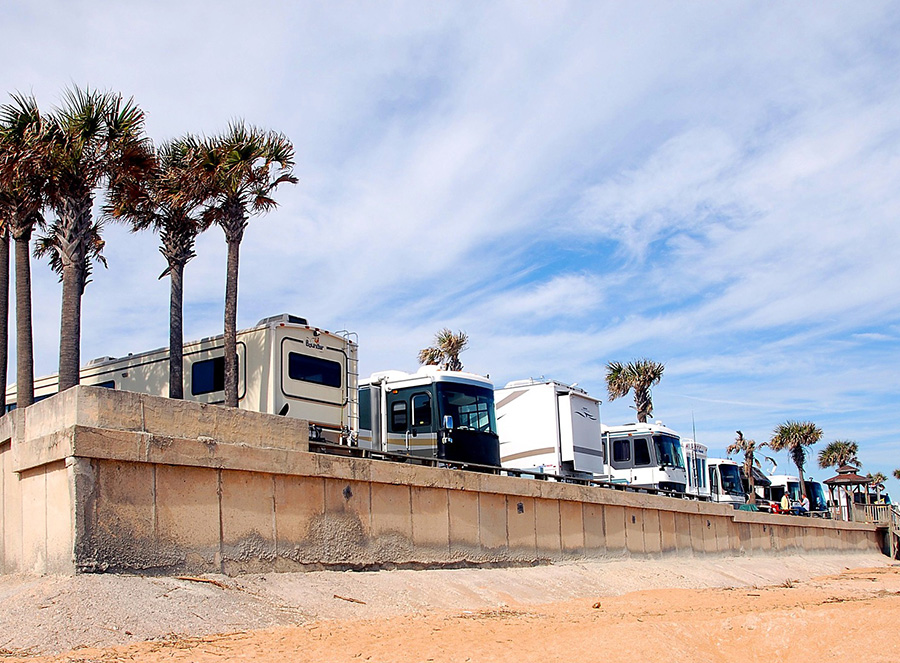
Photo: PaulBR75/Pixabay
Hi Barb,
I spent winter on the Texas Gulf coast and didn’t have any significant problems with salt-induced corrosion. Salt air is not as much a problem as you might think unless you are planning to spend many months on the coast. For visits of a week or two, if your rig is waxed and you wash it or rinse it off when you leave the coast, you should be fine. If you want to spend several months somewhere like Padre Island, where you park on or near the beach, then you may want to wash the rig every week to remove the accumulation of salt and dirt. If any rust or corrosion starts anywhere, clean the spot thoroughly, removing all corrosion, and protect with automotive wax or clear spray-on sealant. I’d avoid oil, or any oily spray stuff, as it will be a dirt and dust magnet. Boeshield T-9 is the best thing for preventing corrosion on metals. Spray it on and it dries to a non-sticky waxy residue.
Hi Mark,
My LP gas-leak detector goes off on an intermittent basis. It went off about six times in one day until I moved all the produce out of the nearby cabinet and aired out insect spray I’d sprayed into the electrical connector box (outside). Weeks will go by and nothing sets it off. Then, seemingly for no reason, off it goes again. I have been advised to ignore it, that “they all do that.” If it is a case of a leak in the line, why would several weeks pass with no alert?
Thanks,
Nicole
Hi Nicole,
Those alarms can be set off by anything in a spray can that uses propane or butane as a propellant. That covers the majority of aerosol sprays, which are a common source of false alarms. If your alarm is more than five years old, it may be in need of replacement. Those alarms do have a service lifespan and many times will begin to act erratically when they get senile. I suspect from the symptoms you describe that you probably don’t have a propane leak. Watch to see if your false alarms are associated with using aerosol products. If not, then it may be time for a new alarm. It’s probably a good idea to replace your smoke alarm, too, if it’s getting on in years.

